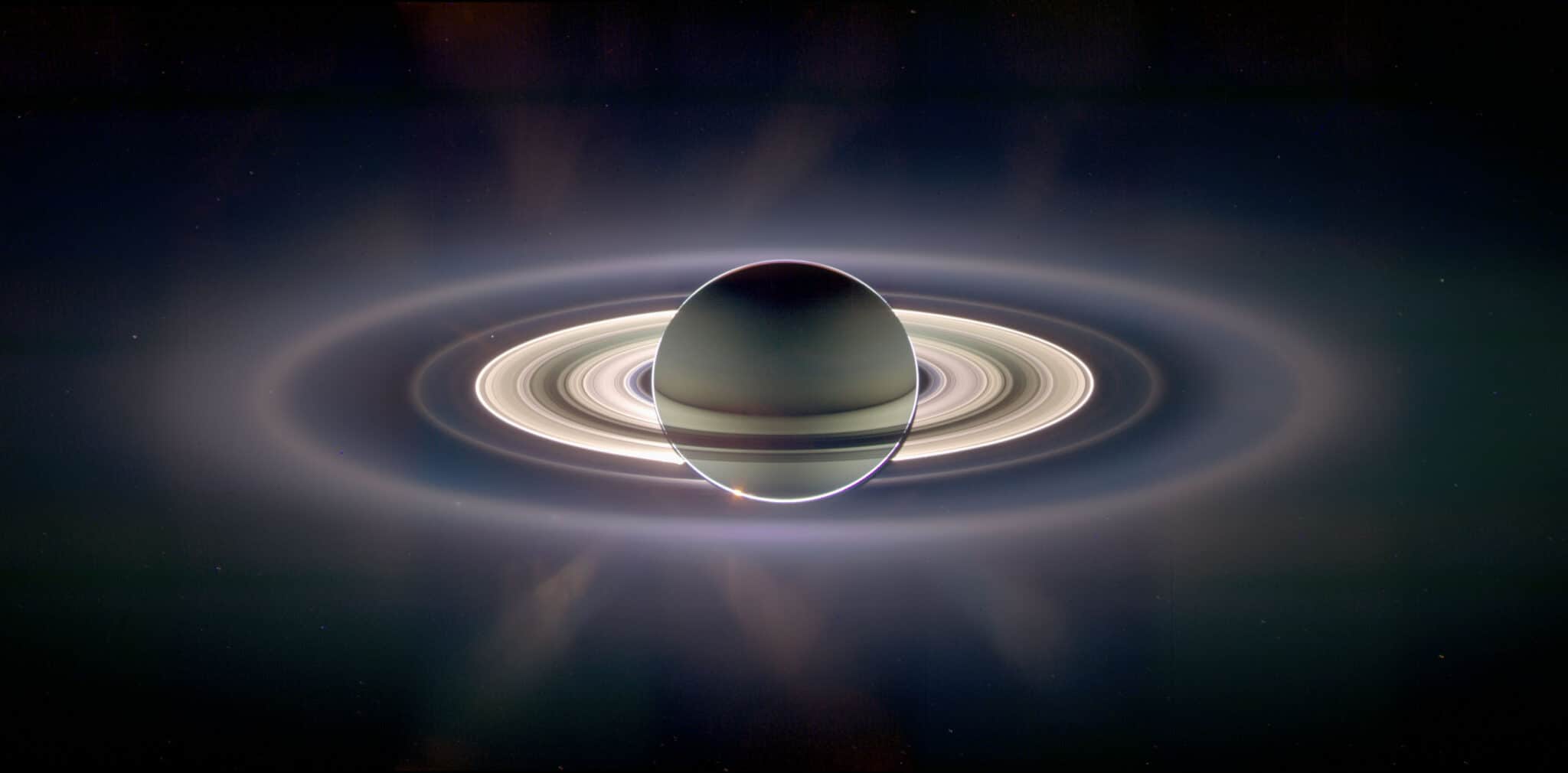

The space photo of the week is this stunning shot of our solar system’s most famous ring planet, Saturn. The photo was taken in 2006 by the Cassini spacecraft.
It’s a wonderful recording. This is because the sun is behind Saturn. So we see the night side of Saturn. A special perspective, because from Earth we only see the day side of Saturn. In addition, images of different wavelengths (including infrared and ultraviolet) have been combined. Suppose we humans were to look at Saturn at Cassini’s position, so we wouldn’t see the ring planet exactly this way.
Another fun fact about this photo is that it is actually a mosaic. In reality, this mosaic consists of 165 photos. These photos were all stitched together to create this shot.

Click on the photo to open a large version.
Fascinating Rings
Saturn’s rings are clearly visible in the photo. As you can see, there is not one ring, but there are many divisions between the rings. This is partly due to the moons of Saturn that wipe orbits or pull the rings apart. The largest separation is the Cassini separation, which can be clearly seen in the photo above.
The rings consist of more than 99% water ice. The rest consists of rocky material. The particles vary in size from millimeters to tens of meters. Scientists estimate the weight of Saturn’s rings at 30 trillion kilograms. The rings are no thicker than twenty meters. Hence, the rings look wafer-thin from Earth.
Unfortunately, there is also bad news. Saturn’s rings are slowly disappearing. For example, every half hour enough water ice falls on Saturn to fill an Olympic swimming pool. Scientists expect that the rings will no longer be visible in 100 million years.

Saturn has over a thousand rings and divisions. This can be clearly seen in the photo above.
Reminiscing about Cassini’s legacy
Unfortunately, we can no longer enjoy new beautiful photos of Saturn and its moons. In 2017, the Cassini mission came to an end and the spacecraft burned up in the ring planet’s atmosphere. Fortunately, a rich archive has been built up. For example, in 2017 we made a top 40 of the most beautiful Cassini photos at Scientias. This photo of Saturn finished in a respectable third place.
Source material:
Image at the top of this article: NASA